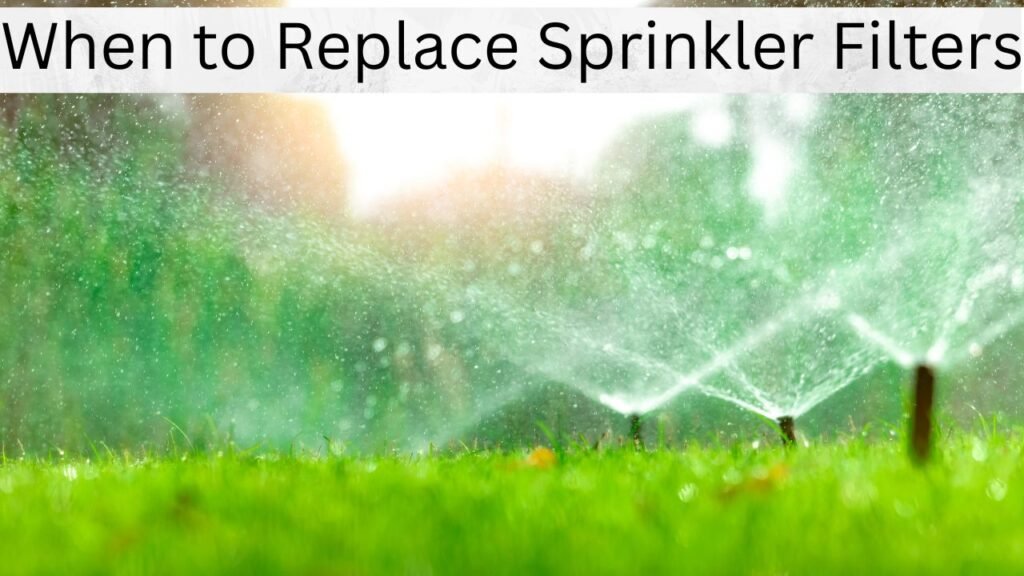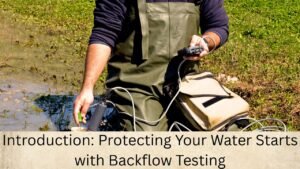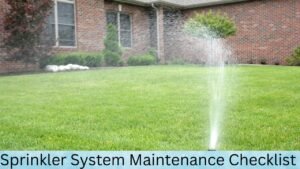Your sprinkler system is one of the most crucial parts of maintaining a healthy, green lawn. But when it stops working properly, it’s usually due to one thing: a clogged or dirty filter. Replacing a sprinkler filter may sound simple, but it’s essential to keep your system running smoothly. Here’s everything you need to know about when to replace sprinkler filters and how to do it—written specifically for homeowners in the USA. Whether you’ve got city water or well water, this guide will help you ensure your system works efficiently and save you money in the long run.

When to Replace Your Sprinkler Filter: Identifying the Signs
Visually Identifying a Clogged Sprinkler Filter
When it comes to identifying if your sprinkler filter needs replacing, look for these common signs:
- Water Pressure Drops: A clogged filter restricts water flow, causing low pressure.
- Uneven Sprinkler Coverage: You may notice some sprinkler heads spitting or barely spraying water.
- Visible Debris: If you spot dirt or other debris in the water, your filter is likely clogged.
- Discolored Filter: If your filter looks coated in sediment or is discolored, it’s a clear sign that it needs replacement.
- Rust or Corrosion: Filters exposed to well water may develop rust or corrosion, signaling the need for a change.
Table: Common Signs Your Sprinkler Filter Needs Replacing
| Sign | Description | Action Required |
|---|---|---|
| Low Water Pressure | Weak flow from sprinkler heads. | Replace filter |
| Uneven Watering | Some areas receive too little water. | Replace filter |
| Visible Debris in Water | Dirt, leaves, or sediment seen in the system. | Clean or replace filter |
| Discolored or Coated Filter | Sediment build-up or change in color. | Replace filter |
| Corrosion/Rust on Filter | Rust forming due to well water. | Replace filter |
Why Regular Filter Replacement is Important
A clogged filter doesn’t just cause immediate performance issues; it can lead to long-term damage. Over time, sediment buildup can strain components like valves and the pump, potentially causing expensive repairs. Regularly replacing your filter ensures that water flows smoothly through your system, saving you on costly repairs and making your lawn care more efficient.
If you don’t replace your filter regularly, your system could develop severe damage such as:
- Pump Strain: A clogged filter forces the pump to work harder, which could lead to pump failure.
- Clogged Sprinkler Heads: Dirt and debris can get lodged in the sprinkler heads, reducing efficiency and requiring frequent replacements.
- Corrosion: Sediment buildup can cause internal components to rust, making them less efficient and shortening the lifespan of your sprinkler system.
Step-by-Step Guide: How to Replace Your Sprinkler Filter
Replacing your sprinkler filter doesn’t have to be a difficult task. Follow these simple steps:
Tools You’ll Need:
- New sprinkler filter
- Filter wrench or pliers
- Lubricant (for O-rings)
- Bucket or towel (to catch water)
- Replacement O-rings (optional)
How to Replace Your Sprinkler Filter:
- Turn Off Water Supply: Shut off your water supply to avoid spills.
- Release Pressure: If applicable, release the pressure in the system by opening a valve.
- Locate the Filter: Your filter is typically located near the backflow preventer or the main valve.
- Remove the Filter Housing: Use a filter wrench or pliers to unscrew the housing.
- Check for Debris: Remove any dirt or debris around the housing to ensure a smooth filter change.
- Remove the Old Filter: Pull out the old filter and inspect it for clogs or sediment buildup.
- Clean the Housing: Rinse the housing with water to remove debris (optional, but recommended).
- Lubricate the O-ring (if applicable): Before reassembling the housing, apply a small amount of lubricant to the O-ring to ensure a proper seal.
- Insert the New Filter: Place the new filter in the housing, ensuring it’s properly seated.
- Reassemble the Filter Housing: Screw the housing back into place. Don’t over-tighten.
- Turn Water Back On: Gradually turn the water supply back on and check for any leaks.
- Test Your System: Watch your sprinklers in action to ensure smooth and even coverage.
How to Identify the Correct Replacement Filter
Choosing the right replacement filter is crucial. Here’s what to look for:
- Micron Rating: Check the micron rating of your old filter. This indicates the level of filtration. A lower number (e.g., 40-60 microns) filters finer particles.
- Brand and Model: Always use a filter that matches your sprinkler system’s brand and model. Refer to the system’s manual for specifications.
- Size: Make sure the new filter fits the housing. If you’re unsure, take the old filter to your local store to match the size.
Cost of Replacement Filters: Is It Worth It?
The cost of replacing a sprinkler filter typically ranges from $10 to $50, depending on the brand and filtration level. While this might seem like a small expense, neglecting to replace your filter could lead to expensive repairs down the road. For instance, a damaged pump or clogged sprinkler heads can cost hundreds of dollars to repair. Replacing the filter regularly is far more cost-effective in the long run.
Consequences of Not Replacing Your Sprinkler Filter
If you ignore the need for regular filter replacement, you risk a number of issues:
- Pump Damage: A clogged filter causes the pump to work harder than it should, increasing wear and tear.
- Inefficient Watering: Poor water flow leads to uneven watering, causing some areas of your lawn to dry out.
- Higher Utility Bills: An inefficient system uses more water, which will drive up your water bills.
By replacing the filter regularly, you prevent these issues and ensure your system remains in good working order.
Q&A: Common Questions About Sprinkler Filters
Q: How long does a new sprinkler filter last?
A: On average, a new sprinkler filter will last about 6 months to a year depending on the quality of your water and the level of usage. If you have well water or hard water, you might need to replace it more frequently.
Q: Can I clean my sprinkler filter instead of replacing it?
A: You can clean the filter, but it’s often better to replace it to ensure optimal performance. Cleaning might not remove all sediment or restore the filter to its original efficiency.
Q: How do I know if my filter is the correct micron rating?
A: Check the specifications of your system or the old filter. The micron rating indicates how small a particle the filter will catch. If in doubt, consult your system’s manual or ask for help at the store.
Conclusion: The Importance of Regular Filter Replacement
Regular filter replacement is essential for keeping your sprinkler system running efficiently. While the cost of a new filter is relatively low, the benefits far outweigh the costs. By replacing your filter regularly, you’ll save on water, reduce maintenance costs, and extend the life of your system. Neglecting to replace your filter can lead to expensive repairs and poor water efficiency. Make sure to replace your filter before the signs of a clog start showing, and enjoy a well-maintained, healthy lawn all year round!





